2025 Multi-Hazard Risk and Resilience Workshop
2025 CSSL-CMRR-WindEEE Multi-hazard Risk and Resilience Workshop


Natural hazards and the growing impacts of climate change are intensifying the risks faced by communities in Canada and around the world. Extreme weather events, floods, earthquakes, wildfires, and coastal storms continue to cause fatalities, economic losses, and infrastructure damage valued at billions of dollars annually. While many studies have been conducted to understand these hazards, there is still much to learn about how multiple hazards interact, how risks evolve under a changing climate, and how best to mitigate these risks. Addressing these challenges requires a collective effort: industry, government, and academic practitioners must work hand in hand to advance knowledge and develop solutions that lead to safer, more resilient communities.
The 2025 CSSL–CMRR Multi-hazard Risk and Resilience Workshop brings together researchers, students, practitioners, and community stakeholders to advance understanding and collaboration in managing multi-hazard risks. Co-hosted by the Canada Severe Storms Laboratory (CSSL), the Centre for Multi-hazard Risk and Resilience (CMRR), and the Wind Engineering, Energy and Environment (WindEEE), the workshop provides a platform for sharing innovative research, best practices, and practical solutions to enhance community resilience in the face of natural hazards.
The workshop will be conducted in a hybrid format, enabling both in-person and virtual participation. Students are especially encouraged to present their work, with opportunities to showcase their research alongside established experts. To recognize outstanding contributions, prizes will be awarded to the best student presenters: first place ($300) and two runner-up awards ($150 each).
Participants will engage in technical sessions featuring expert presentations, a dedicated student session, and interactive discussions designed to foster collaboration, professional development, and knowledge exchange across disciplines. The workshop provides a collaborative environment to strengthen partnerships and inspire actionable research toward safer, more resilient, and sustainable communities.
Why Attend?
-
Innovative Research: Explore the latest finding and approaches in multi-hazard risk and resilience.
-
Collaboration: Connect and network with experts, policymakers, and emerging leaders.
-
Interactive Sessions: Participate in engaging presentations and hands-on learning experiences.
Flyer
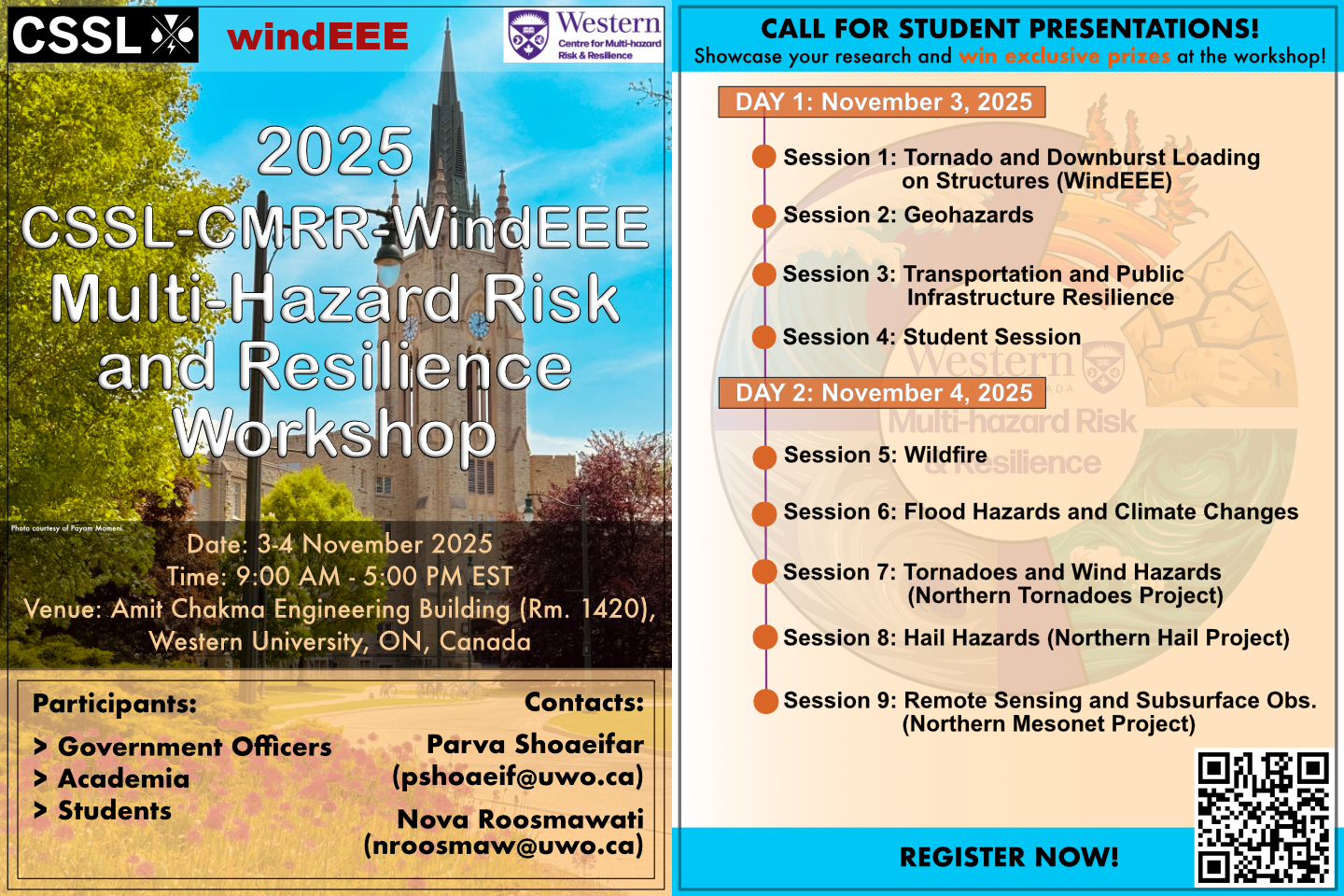
Registration and Agenda
Scan the QR code above or click the link below to register by October 27, 2025, at 11:59 PM.
Workshop Summary
The Multi-Hazard Risk and Resilience Workshop was successfully held on November 3-4, 2025, through a collaboration between the Canada Severe Storms Laboratory (CSSL), the Centre for Multi-Hazard Risk and Resilience (CMRR), and the Wind Engineering, Energy and Environment Research Facility (WindEEE).
The event brought together academics, practitioners, industry professionals, and students to share research and ideas on addressing the growing impacts of extreme weather events, floods, earthquakes, wildfires, and coastal storms across Canada.
This collaborative workshop fostered valuable discussions and partnerships aimed at advancing resilience research and reducing the risks faced by communities. The organizers hope to continue building on this successful collaboration in future initiatives.
The photos reflect the enthusiasm and engagement of participants, showcasing a full room of attendees and diverse presentations throughout the workshop.
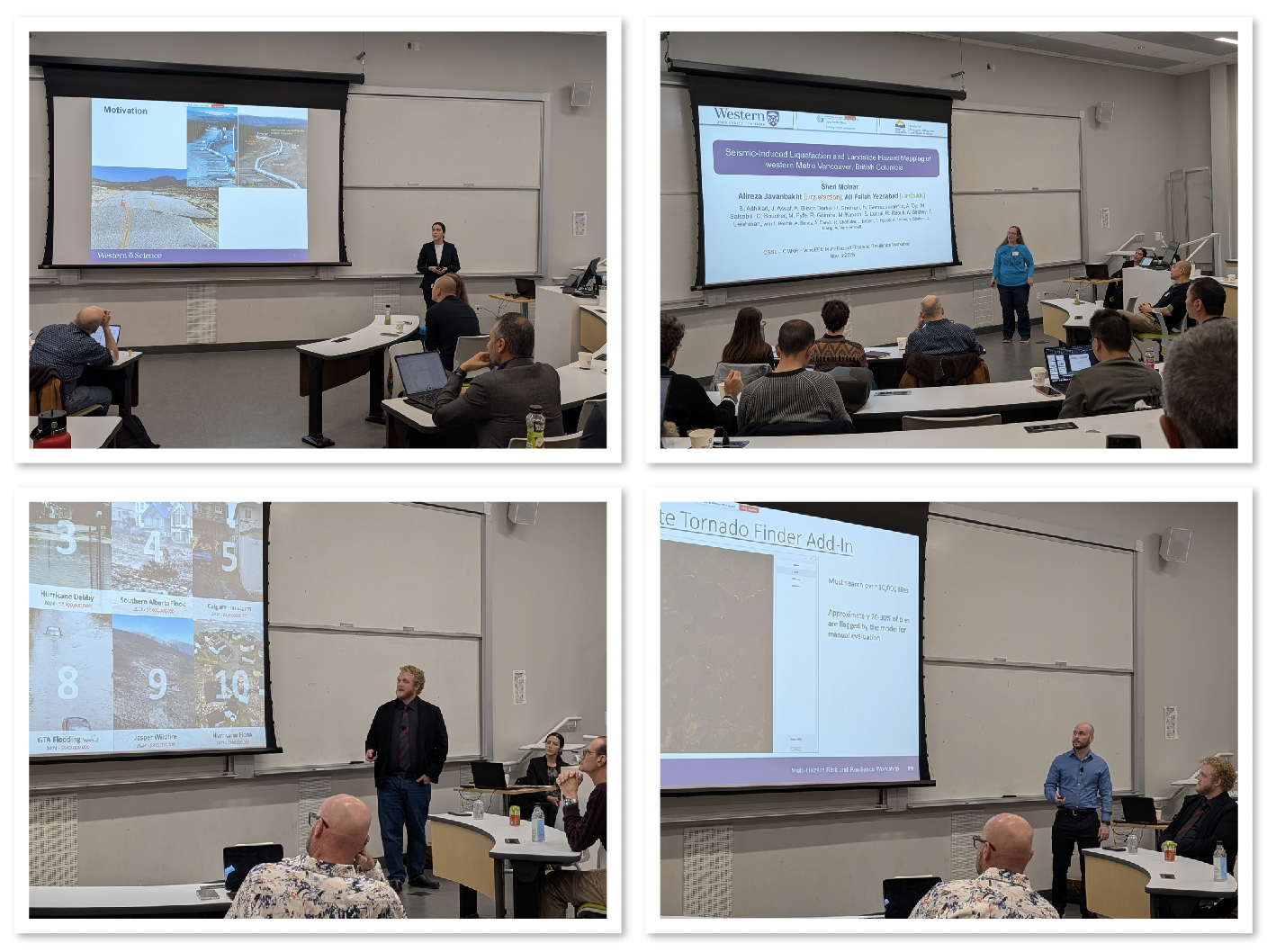
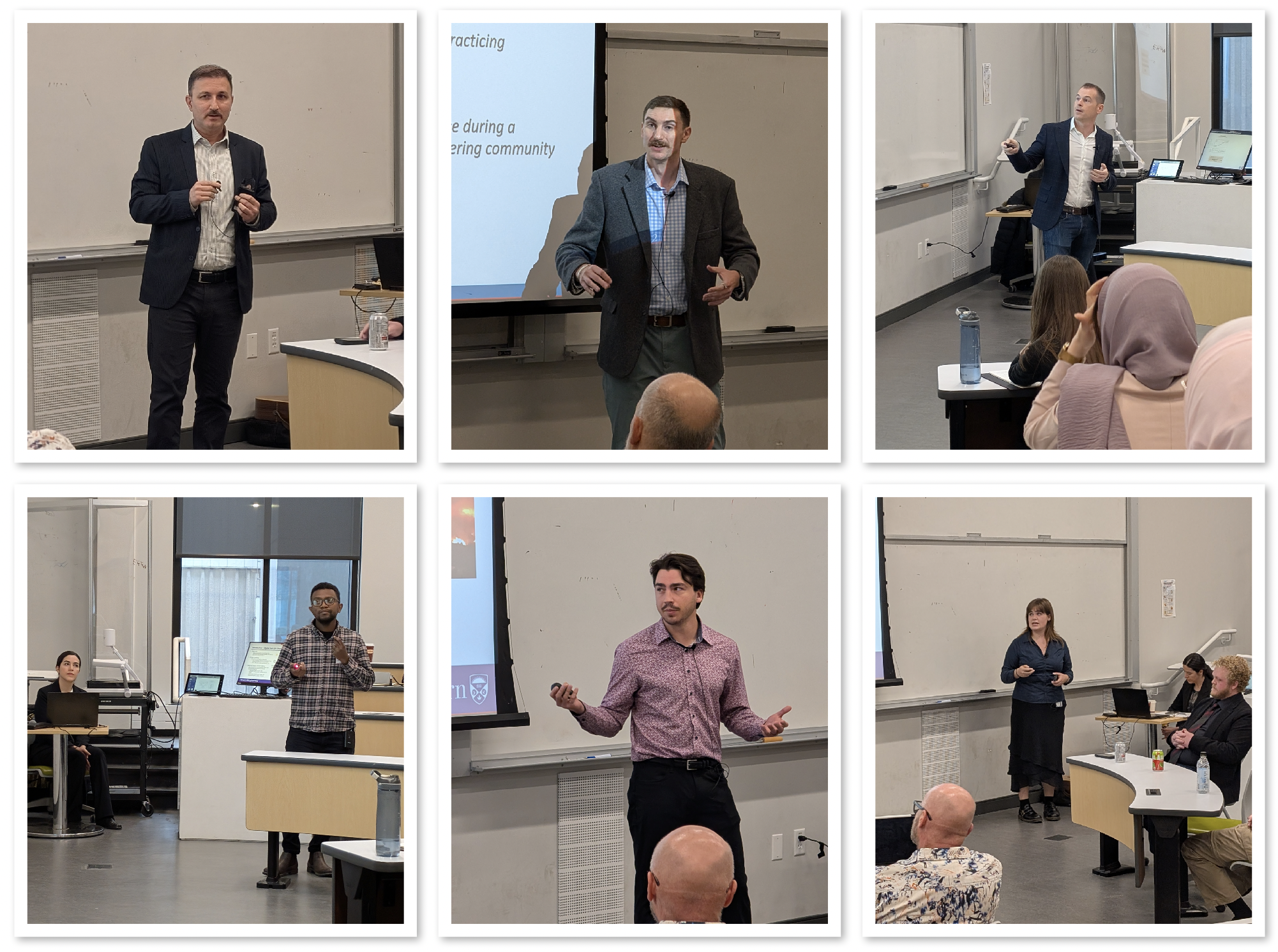
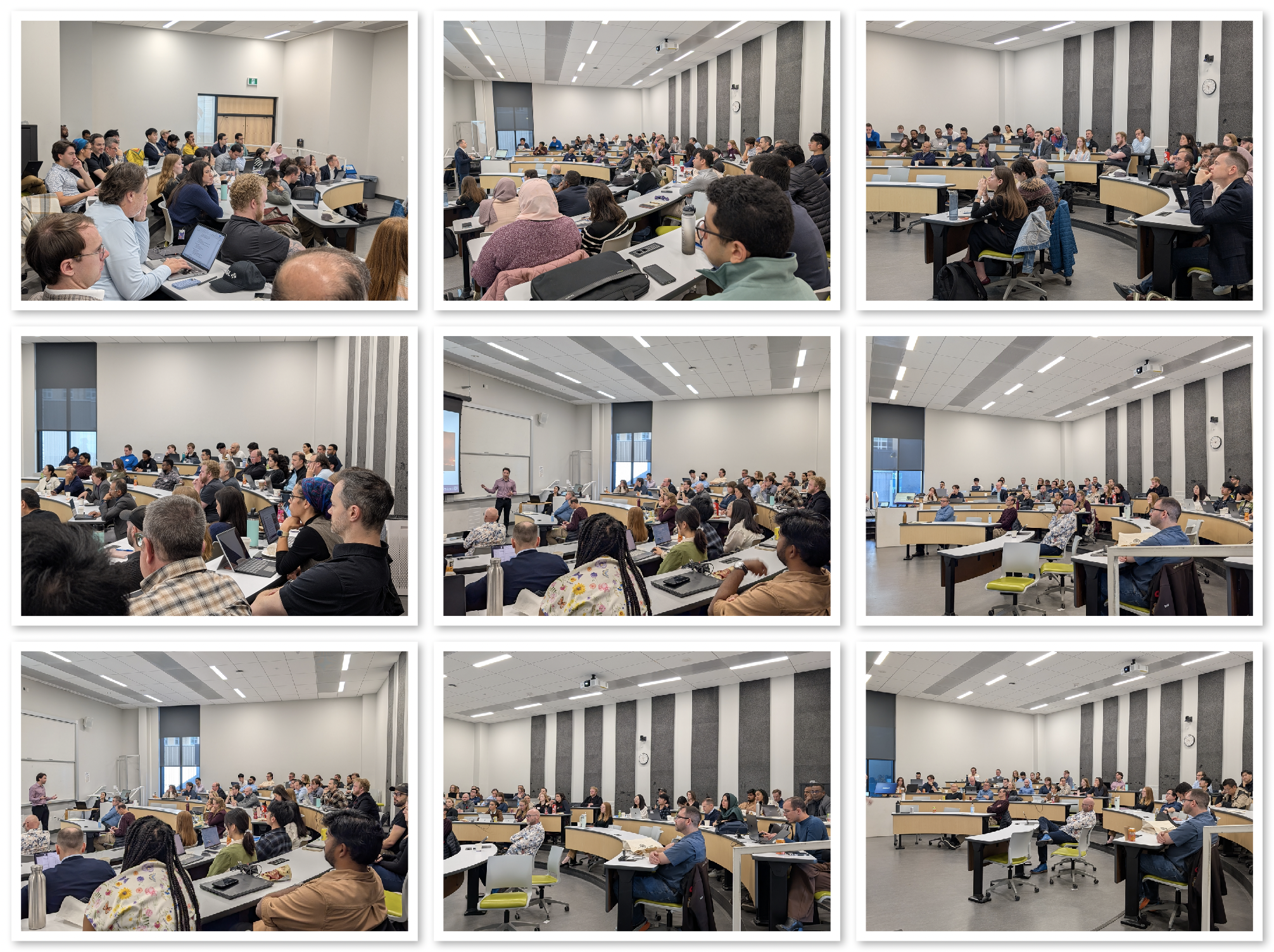
Adam Skinner (Instant Weather), one of the workshop presenters, concluded his talk with a performance of his original song, adding a memorable and creative touch to the session.
The organizers would like to express their sincere appreciation to Dr. Parva Shoaeifar for her pivotal role and tremendous effort in organizing and coordinating the workshop, ensuring that everything ran smoothly. Despite her busy schedule completing her PhD program, she dedicated herself wholeheartedly to the success of this event.
Our heartfelt thanks also go to Dr. Katsuichiro Goda and Dr. M. Reza Najafi for their strong support, valuable suggestions, and feedback, which were essential in making the workshop well organized and impactful.
We are deeply grateful to Navid Sirous and Safoora Zarei for their outstanding contributions and dedication, which were crucial to the successful delivery of the event.
The success of this workshop was also made possible through the support of our partner institutions—CSSL, CMRR, and WindEEE—as well as the active involvement of all speakers, attendees, and participants.
Student Presentation Session Showcases Diverse Research and Innovation
The student presentation session showcased a remarkable range of research topics, reflecting the creativity, dedication, and analytical skills of emerging researchers. The projects spanned multiple disciplines, addressing issues from cutting-edge scientific studies to innovative applications in engineering, environmental science, and Earth sciences. Read the abstract compilation to learn more.
This year’s session adopted an interactive PICO format — beginning with a 3-minute oral presentation from each student to introduce their work, followed by individual discussions at designated computer stations (as shown in the photo collage below). This format allowed attendees to engage directly with the presenters, ask in-depth questions, and explore the details of each study in a dynamic and collaborative environment.
The judges were impressed by the clarity, originality, and impact demonstrated across all presentations. After careful evaluation, the winners of the student presentation competition were announced:
First Place Winner: Kanakom Thongmeesang (The second person from the left in the photo below) - Department of Earth Science
Presentation title: Forecasting the Largest Expected Earthquake in Canadian Seismogenic Zones
Second Place: Yasaman Taleghani (The first person from the right in the photo below) - Department of Civil and Environmental Engineering
Presentation title: Future Changes in Coastal Compound Flooding of Storm Surge and Significant Wave Height in the Pacific Ocean
Third Place: Mehrdad Jafarzadeh Khoshroudi (The first person from the left in the photo below) - Department of Mechanical and Materials Engineering
Presentation title: Hydrodynamic Modeling of Lake Ontario for Flood Risk Assessment Using TELEMAC-2D
Congratulations to all student presenters for their excellent work and inspiring contributions. Their enthusiasm and innovative thinking continue to push the boundaries of research excellence.
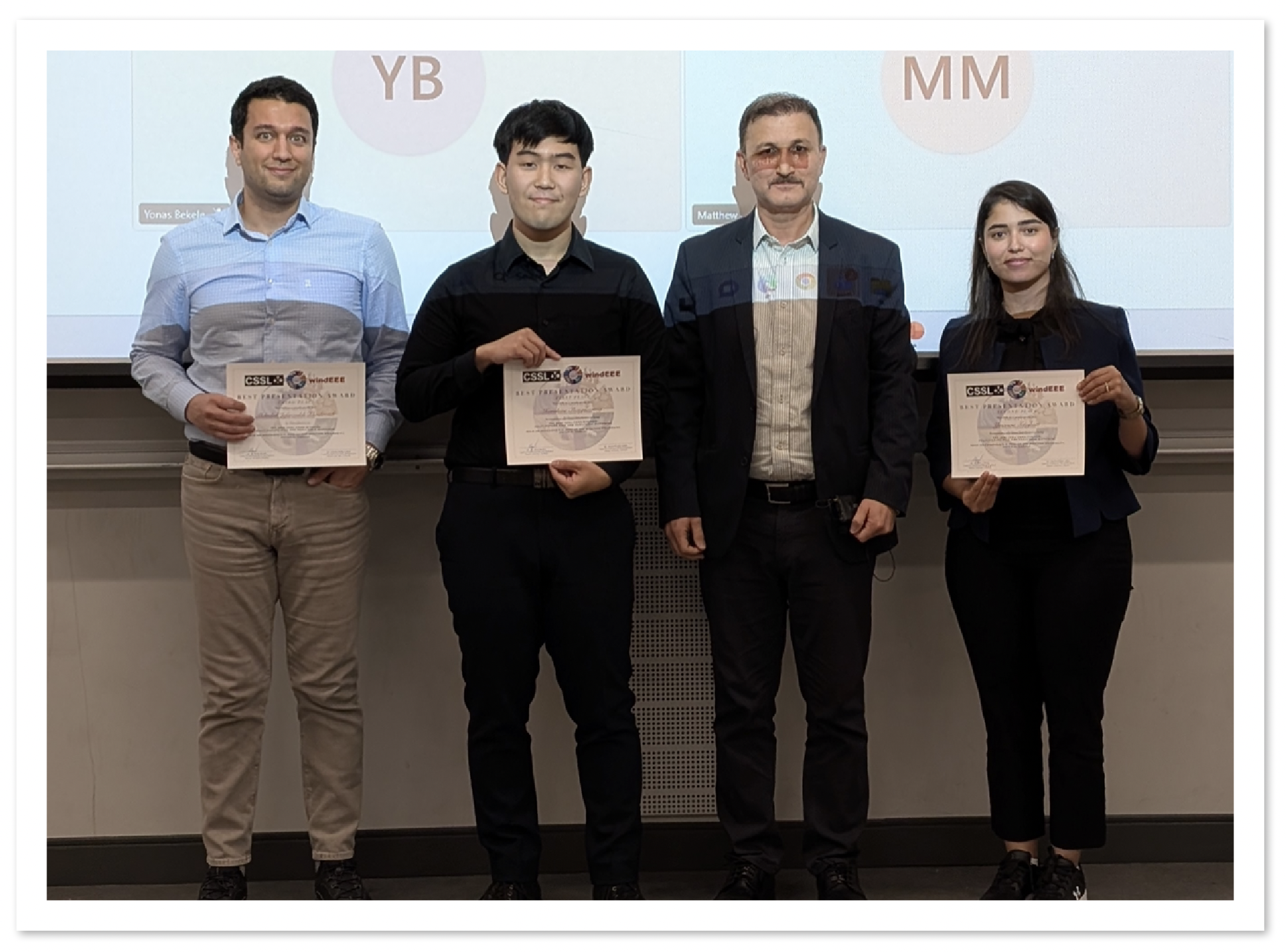

The 2025 CSSL-CMRR-WindEEE Workshop Recordings
DAY 1 - November 3rd, 2025
Session 1: Tornado and Downburst Loading on Structures
Girma Bitsuamlak - Tornado and Atmospheric Boundary Layer (ABL) Wind Comparisons
Alessandro Mariotti - Downburst Loading on Vertical and Horizontal Structures
Tibebu H. Birhane - Tornado Load on Structures
J.M. Hunde - Automated Geometric Model Generation for Digital Twin-based Climate Modelling
Session 2: Geohazards
Robert Shcherbakov - Earthquake Declustering Using Supervised Machine Learning
Bing Li - Fluid-driven Seismicity: Volcanic and Anthropogenic Systems
Session 3: Transportation and Public Infrastructure Resilience
Moataz Mohamed - Resilient Zero-emission Electric Mobility Solutions
Gabriel Walton - Characterizing and Forecasting Rockfall Hazard – Experience from Colorado
Ayan Sadhu - Toward AI-enabled Digitization of Resilient and Sustainable Civil Infrastructure
Arnold Xie - An Automated Framework for Probabilistic Back-analysis of Rockfall Trajectories
Yili (Kelly) Tang - Smart Railway AI Monitoring and Predictive Maintenance
Session 4: Student Session (PICO Presentations)
Kanakom Thongmeesang - Forecasting the largest expected earthquake in Canadian seismogenic zones
Issam Mohamed - The Impact of Drought Conditions on Hailstorm Activities in Alberta
Ahmed Mohamed Wahdan - Hail impact on the clayey soil
Ebrahim Gamaleldin - Geotechnical Evaluation of Wind Speeds from Windthrow Resistance of Trees
DAY 2 - November 4th, 2025
Session 5: Wildfire
Melanie Wheatley - How Does Science Inform Wildland Fire Management in Ontario?
Kevin Alamanda - Advancing Workplace Safety through Artificial Intelligence Integration
Shuai You - Modelling Occurrence and Persistence of Smoke Events in Northwest Ontario
Session 6: Flood Hazards and Climate Change
Luis Cordova - Dynamic Assessment of Compound Coastal Floods across Malecón, Havana (Pre-recorded) | Live Q & A
Nobuhito Mori - Assessment of Compound River and Coastal Flooding around Japan
Farzad Fahimi - Flood Risk Assessment in Urban Area
Session 7: Tornadoes and Wind Hazards
Connell Miller - When Train Cars Fly: Gleaning Tornado Characteristics Through Tracking Large Debris
Yongxu Liu - Assessment of Tornado Wind Hazards in Canada
John Hanesiak - Significant Tornado Environments in Canada
Aaron Jaffe - Significant Wind Damage from the 2024 Jasper Wildfire
David Sills - Canada’s New Tornado Climatology and Long-Term Trends
Session 8: Hail Hazards
Jack Hamilton - Towards a Canadian Hail Climatology using ERA-5 Reanalysis Data and HAILCAST
Simon Eng - 4 Years of Forensic Hail Damage Surveys Across Canada
John Allen - Overview of the Recent ICECHIP Field Campaign
Julian Brimelow - An Update on the Northern Hail Project
Session 9: Remote Sensing / Surface Observations
Adam Skinner - Instant Impact: Building Canada’s Largest Storm Reporting Community
Sophia Slabon - Synthetic Aperture Radar Usage in Severe Weather Damage Classification
Daniel Butt - Semi-Automated Satellite Detection of Tornado Forest Damage Using Computer Vision





